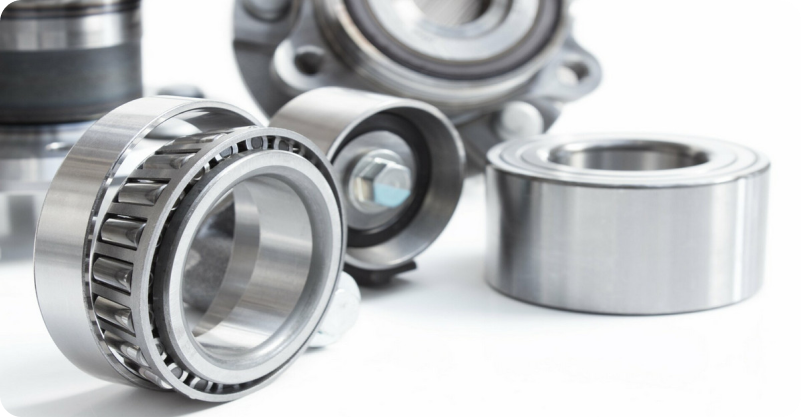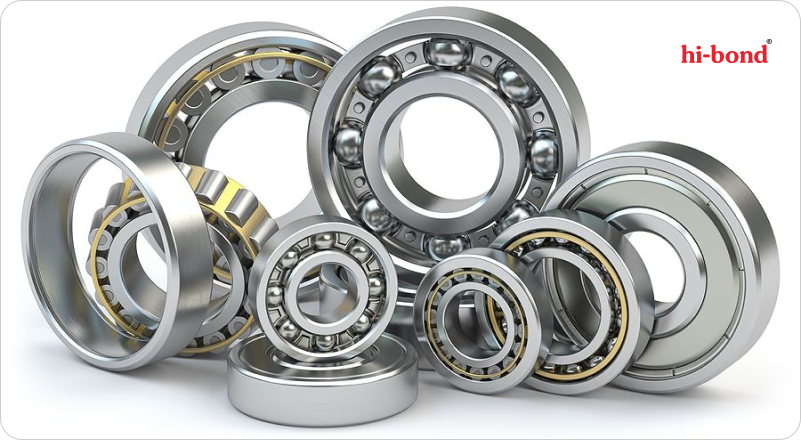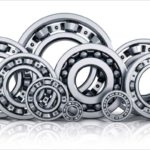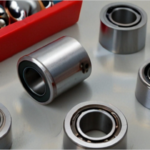The healthcare industry relies on bearings as the most essential part of various applications. When designing medical equipment, engineers and designers have to decide the type of bearings to use and the bearing design to consider.
Medical devices need rolling element bearings to work well. Engineers and designers face challenges when creating these devices, as bearings are needed for both simple and complex applications. From tools used in surgeries to dental drills, pumps, and ventilators, high precision ball bearings are used to operate medical devices effectively in demanding conditions. These bearings for medical equipment are also used in diagnostic and imaging.
Bearing manufacturers focus on choosing the right materials, lubrication, precision, noise reduction, and protection from contamination to ensure the proper working of bearings for medical devices. Hi-bond Bearings Pvt. Ltd, one of the highly trusted bearing manufacturers, discusses the five important ball bearing design elements used in medical devices.
The 5 Main Ball Bearing Design Elements for Medical Devices (Considered by Hi-bond Bearing Manufacturers)
The design of ball bearings is of utmost importance in medical devices. Bearing manufacturers carefully consider five major ball bearing design elements to guarantee the effectiveness and reliability of these products used.
1. MATERIAL
Choosing the right bearing materials in medical devices is important to ensure patient safety and regulatory compliance.
Refined martensitic stainless steel is recommended for most medical applications. It offers the same corrosion resistance as AISI 440C but with less carbon and chromium. It means less noise and vibration during operation, perfect for high-speed instruments like dental drills.
If you need higher corrosion resistance, go for nitrogen-enhanced martensitic stainless steel. This material used for ball bearing design costs more but provides five times the corrosion resistance of 440C. It is best for environments exposed to blood, lasts longer, and creates minimal noise.
For specific applications, ceramic balls are considered lightweight, non-magnetic, and resistant to liquids and chemicals. They improve bearing speed but can increase stress and affect fatigue life. When fatigue is a concern, go for steel balls.
Full ceramic bearings, with ceramic rings and balls, are completely non-magnetic. They work great in imaging equipment. Keep in mind that they may be less accurate and more expensive than steel bearings. Titanium and 300 series stainless steel are biocompatible, but they have reduced load capacity and higher costs.
Remember the retainer or ball separator. For medical applications, use 300 series stainless steel retainers. In high-speed situations, consider plastic or phenolic resin crown-style retainers. Choose an angular contact bearing with a one-piece retainer for extremely high speeds and stability. Lightweight plastic materials work well, resisting high temperatures and allowing autoclaving. Phenolic resin cages with oil impregnation improve lubrication.
2. LUBRICATION
Next comes choosing the right lubricant for bearings – important but often overlooked. One factor to consider is the operating temperature because it affects the thickness of the oil, which in turn affects how well it supports the loads on the bearings.
In medical applications, bearing lubricants are subjected face tough challenges, such as sterilization, severe temperatures, extremely high speed rotation, and exposure to saline, reagents, blood, and radiation.
Lubricants need to match the operating conditions, and regulatory requirements must also be considered. Manufacturers of medical devices often need to use special lubricants certified by organizations like NSF (National Science Foundation).
In surgical tools that touch patients, medical-grade silicone or mineral oil-based lubricants can handle high speeds and resist steam and water during sterilization.
For extreme situations where regular oil or grease won’t cut it, they even use solid films made of materials like graphite or gold.
Choosing the right lubricant can be tricky, so it’s a good idea to consult with the bearing manufacturing company. They have the expertise to guide you through the many options available. Remember, a well-lubricated bearing is a happy bearing!
3. PRECISION LEVEL
Ball bearings in medical devices need to be precise. While all bearings are precise mechanisms, it’s necessary to consider the different precision level options and how they impact performance and lifespan.
For instance, if the raceway isn’t parallel, it can cause torque spikes during rotation. In high-speed applications, excessive bearing runout can create an imbalance in the rotating mass, leading to potential failures.
You need to know that in the United States, the American Bearing Manufacturers Association (ABMA) specifies bearing tolerance classes as ABEC 1, ABEC 3, ABEC 5, ABEC 7, and ABEC 9. The higher the tolerance class number, the tighter the tolerances. These classes define size and form tolerances for the inner and outer rings of the specific bearing. Size tolerances include the inner and outer diameters and ring widths, while form tolerances cover roundness, taper, runout, and parallelism.
Ball bearings with higher tolerance classes are designed for precision applications that require accurate running, high-speed rotation, and low torque. In handheld instruments like surgical or dental drills, using higher precision bearings and bushings helps reduce noise, vibration, and heat generation, making the tool more comfortable for the operator. Note that higher precision bearings usually come at a higher price.
4. NOISE & VIBRATION

Noise and vibration are like unwelcome guests in rotating bearings. In applications like dental or surgical drills where speeds exceed 100,000 RPM, it’s essential to consider bearings that meet low noise and vibration requirements. Noise is the audible component of vibration and is influenced by the rotational speed. Vibration can be caused by multiple factors, including rough or damaged surfaces on the rings and balls, poor geometric tolerances, contamination, incorrect lubrication, improper radial play, and misaligned shafts and housings.
To combat these issues, most miniature and instrument bearings manufacturers produce bearings that operate at very low noise levels, known as EMQ or electric motor quality bearings. These EMQ ball bearings reduce friction and undergo superfinishing of the rolling contact surfaces, creating a mirror-like finish that ensures smooth rotation. Additionally, strict control over the geometric tolerances of the bearing components is required. Note that EMQ standards may vary among bearing manufacturers, unlike the standardized ABEC tolerance classes.
5. CONTAMINATION
Contamination is a major concern for medical devices and instruments. They come into contact with blood, saline solutions, and antiseptic fluids. Even sterilization processes introduce rinsing liquids and high-pressure steam. To protect miniature and instrument ball bearings, different closures like shields and seals are available. Shields, made of stainless steel, are the most common closure. They don’t touch the bearing’s inner ring, so they have no impact on torque or speed.
In highly contaminated environments, molded rubber seals are recommended. They contact the inner ring for better protection but may increase rotational torque and reduce maximum speed capability.
For seal materials, nitrile rubber is commonly used. It can withstand temperatures up to 240 °F. However, it may not suit all applications due to its reaction with certain fluids and lubricants. Fluoroelastomers like Viton offer good chemical resistance and can handle temperatures up to 400 °F. FDA-approved food-grade silicone rubber is another option, with an operating temperature range from -80 to 450 °F.
For excellent sealing in medical applications, glass-reinforced PTFE or Teflon seals are highly recommended. They offer outstanding chemical resistance, high or low temperature endurance, and produce less torque than rubber seals. However, their robustness may vary, so careful consideration is necessary for the best performance when making ball bearing design.
Hi-bond Prioritizes Bearing Design for Effective Medical Device Performance
The selection of suitable bearings for medical devices plays a key role in securing their reliability and performance. Careful consideration of factors such as material choice, bearing lubrication, precision, noise levels, and protection from contamination is essential to meet the rigorous requirements of the healthcare industry.
As reputed bearings and bushes suppliers, Hi-bond Bearings Pvt. Ltd prioritized the ball bearing design considerations. Their commitment to considering these factors enables the creation of safe and effective bearings for medical devices that greatly improve patient outcomes and upgrade the overall quality of healthcare.
Continual research into materials, retainers, special lubricants, and bearing geometry optimization further demonstrates their dedication to meeting the growing demands of bearings in the industry.
With exceptional product quality and a flexible problem-solving approach, Hi-bond bearing manufacturers contribute to advancing healthcare and ensuring optimal performance in medical applications.




